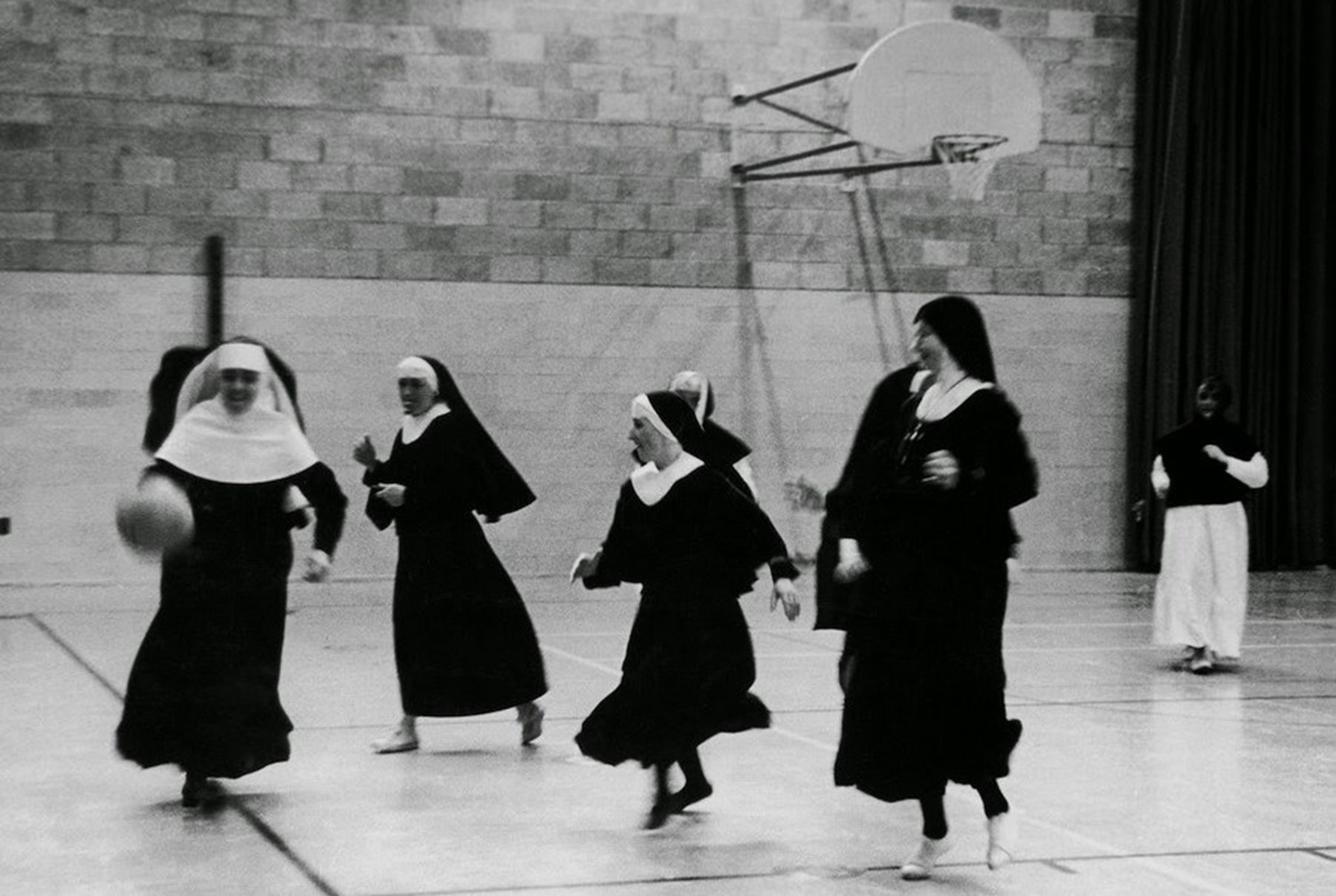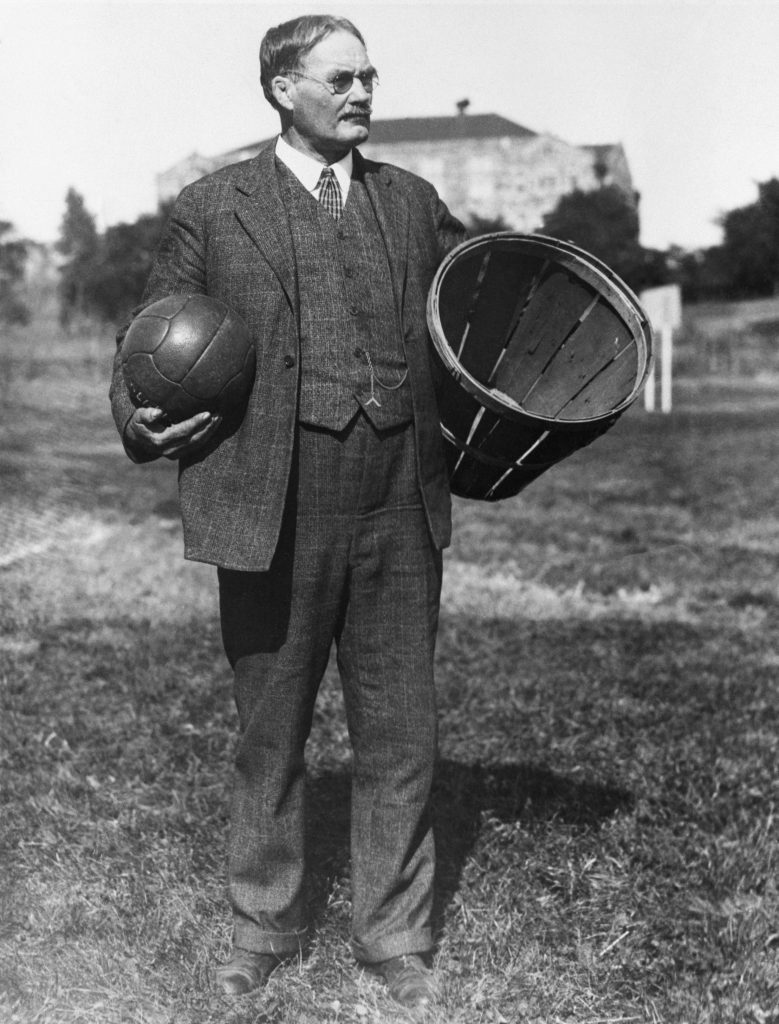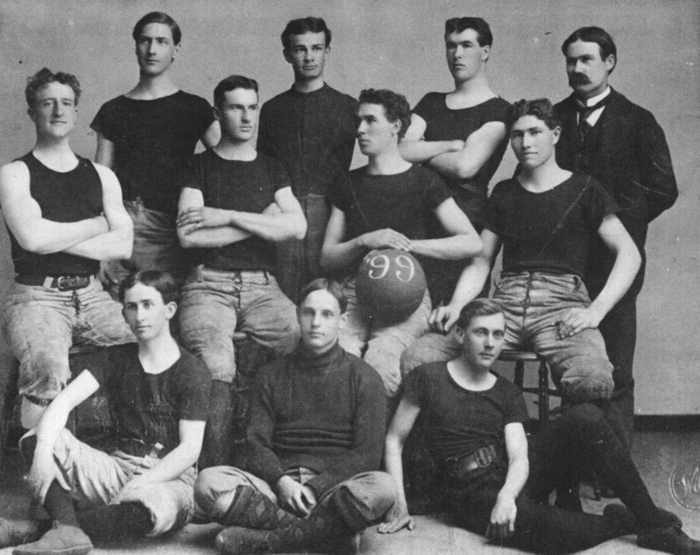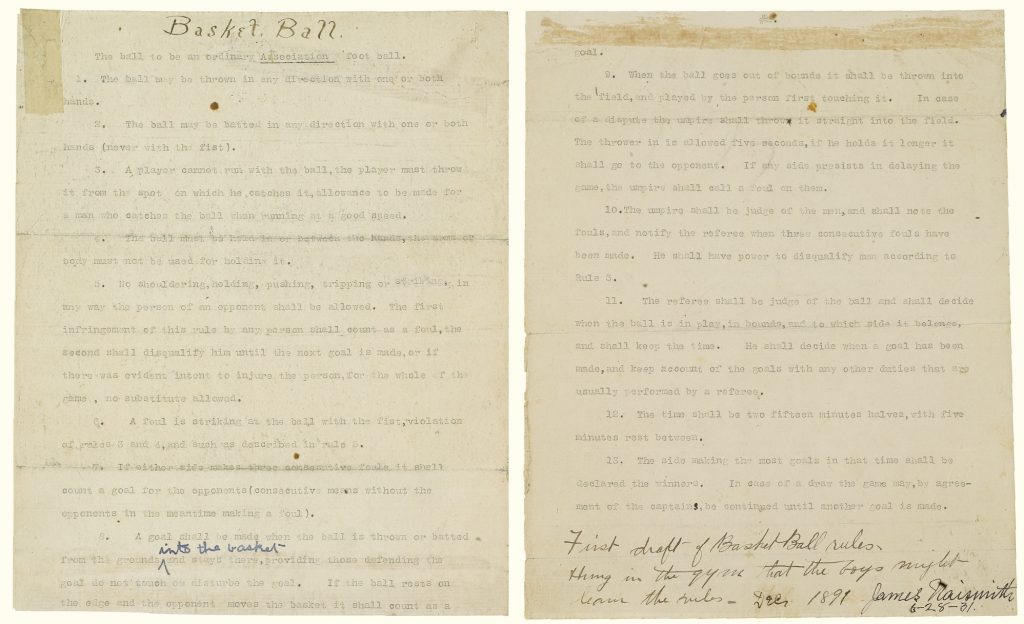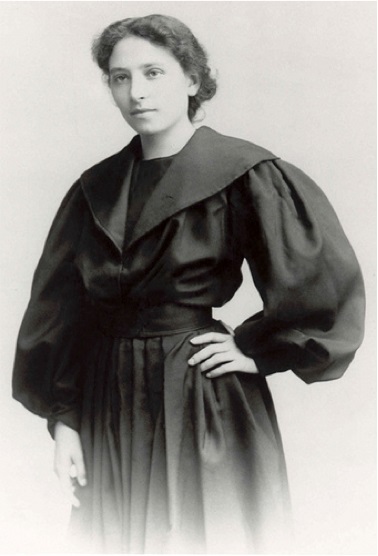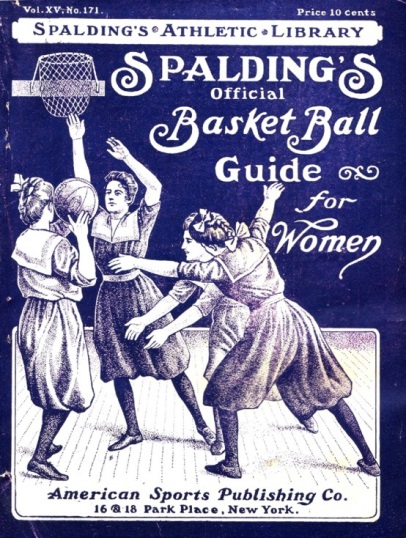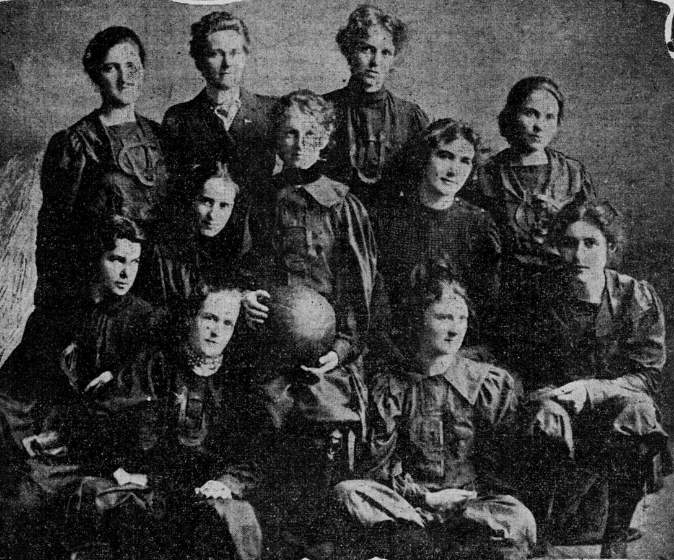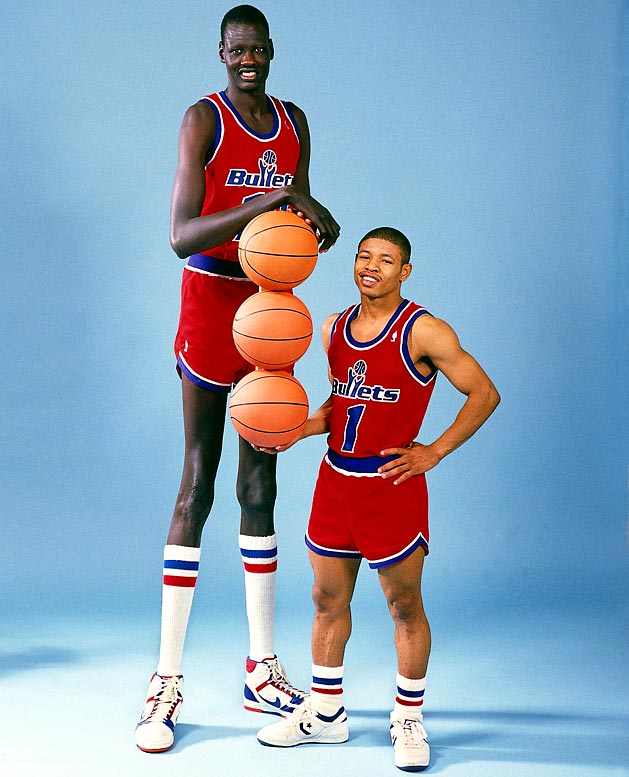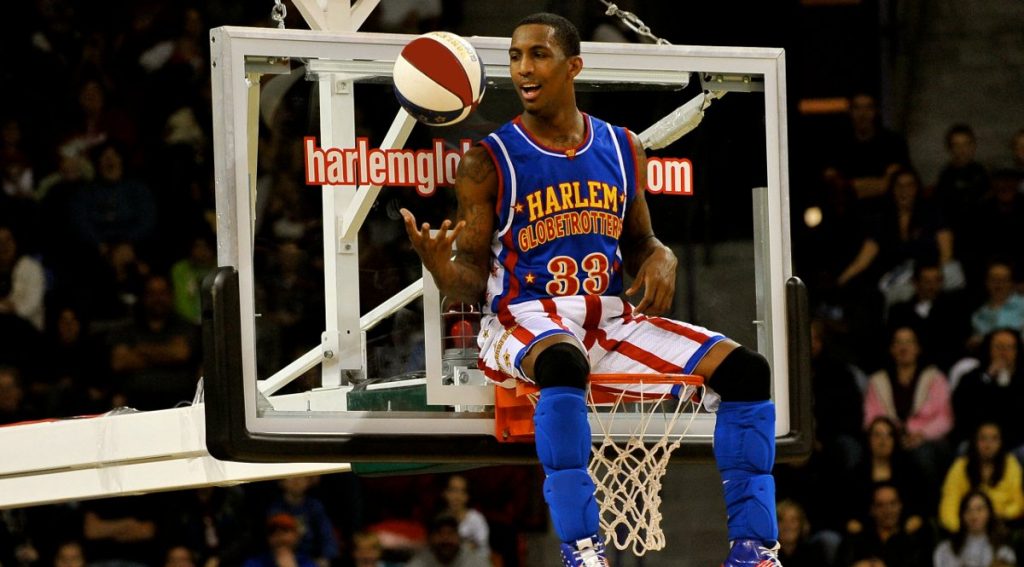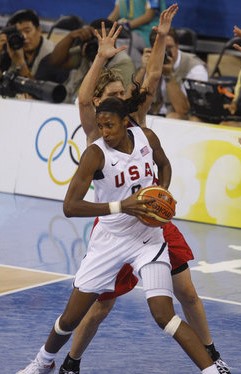I enjoy watching athletes in a variety of sports, and basketball is one of my favorites. In honor of March Madness, I started looking into what goes on off the court. Some of the elements that make basketball so entertaining are relatively recent developments, but many have been around since the very beginning.
B-Ball History
Basketball began in 1891, invented by James Naismith, a 31-year-old graduate student and instructor at Springfield College. Luther Gulick (then the College’s physical education superintendent, today renowned as the father of physical education and recreation in the United States) charged Naismith to come up with a new game. The goal was to create an indoor activity that college students could play during the long New England winters. The bonus was that it’s a less injury-prone sport than football. Students quickly adopted the new pastime, and it’s grown in popularity since.
Naismith’s creation was an amalgamation of many games of the time, including American rugby (passing), English rugby (the jump ball), lacrosse (use of a goal), soccer (the shape and size of the ball), and something called duck on a rock, a game Naismith had played with his childhood friends in Bennie’s Corners, Ontario. Duck on a rock used a ball and a goal that players could not rush. The goal also could not be slammed through, thus necessitating “a goal with a horizontal opening high enough so that the ball would have to be tossed into it, rather than being thrown.”
The First Game
Naismith nailed two peach baskets to the lower rail of the gymnasium balcony, one at each end. An assistant stood at each end of the balcony to collect the ball from the basket and put it back into play. It wasn’t until a few years later that someone thought to cut the bottoms out of those peach baskets so the ball could fall loose. (I’ve abbreviated this history of basketball from the Springfield College website.)
The first game ended in a brawl. “One boy was knocked out. Several of them had black eyes and one had a dislocated shoulder,” Naismith said. “After that first match, I was afraid they’d kill each other, but they kept nagging me to let them play again so I made up some more rules.” (Quoted from a National Geographic article on the history of basketball.
Early Rules
On January 15, 1892, the Springfield College school newspaper, The Triangle, published the original basketball rules.
1. The ball may be thrown in any direction with one or both hands.
2. The ball may be batted in any direction with one or both hands (never with the fist).
3. A player cannot run with the ball. The player must throw it from the spot on which he catches it, allowance to be made for a man who catches the ball when running at a good speed if he tries to stop.
4. The ball must be held in or between the hands; the arms or body must not be used for holding it.
5. No shouldering, holding, pushing, tripping, or striking in any way the person of an opponent shall be allowed; the first infringement of this rule by any player shall count as a foul, the second shall disqualify him until the next goal is made, or, if there was evident intent to injure the person, for the whole of the game, no substitute allowed.
6. A foul is striking at the ball with the fist, violation of Rules 3,4, and such as described in Rule 5.
7. If either side makes three consecutive fouls, it shall count a goal for the opponents (consecutive means without the opponents in the mean time making a foul).
8. A goal shall be made when the ball is thrown or batted from the grounds into the basket and stays there, providing those defending the goal do not touch or disturb the goal. If the ball rests on the edges, and the opponent moves the basket, it shall count as a goal.
9. When the ball goes out of bounds, it shall be thrown into the field of play by the person first touching it. In case of a dispute, the umpire shall throw it straight into the field. The thrower-in is allowed five seconds; if he holds it longer, it shall go to the opponent. If any side persists in delaying the game, the umpire shall call a foul on that side.
10. The umpire shall be judge of the men and shall note the fouls and notify the referee when three consecutive fouls have been made. He shall have power to disqualify men according to Rule 5.
11. The referee shall be judge of the ball and shall decide when the ball is in play, in bounds, to which side it belongs, and shall keep the time. He shall decide when a goal has been made, and keep account of the goals with any other duties that are usually performed by a referee.
12. The time shall be two 15-minute halves, with five minutes’ rest between.
13. The side making the most goals in that time shall be declared the winner. In case of a draw, the game may, by agreement of the captains, be continued until another goal is made.
Changes
The website HoopTactics chronicled the major changes in basketball since those earliest years. Here are the areas of change, in chronological order. You can look them up. Virtually everything has changed!
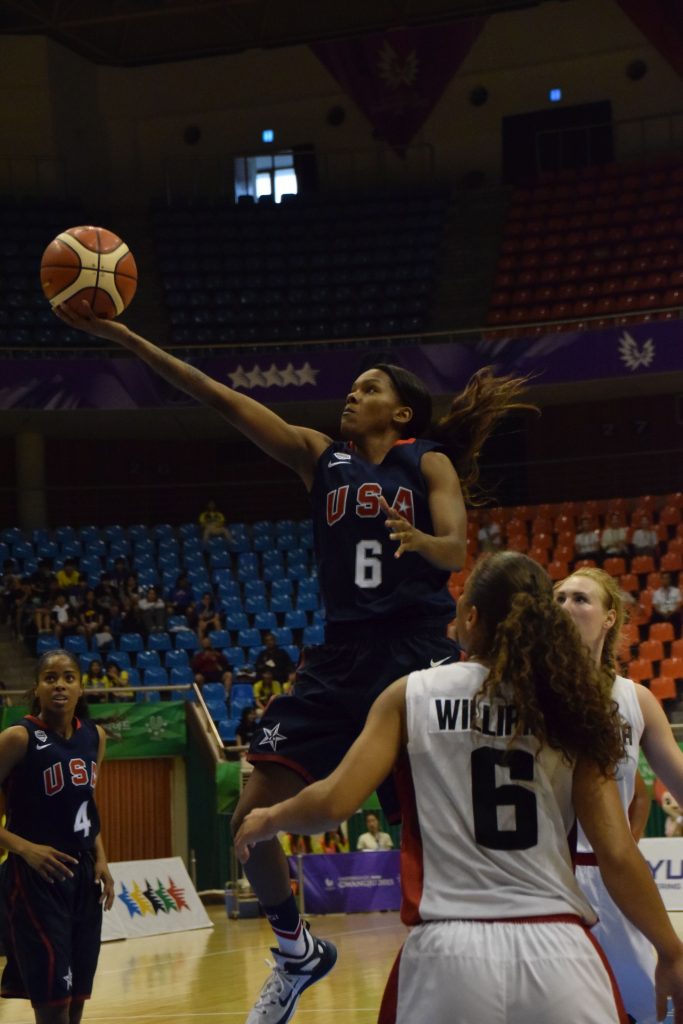
(from the 2015 World University Games, held in South Korea, USA playing Canada)
- Team size
- Substitutions
- Baskets
- Backboards
- Balls
- Scoring
- Timing
- Shot clock
- Fouls
- Free throws
- Passing, not changed from original Rules 1 & 2
- Dribbling
- Out of bounds
- Midcourt line
- Three-second area
- Free throw lanes
- Center jump
- Goal tending
- Offensive basket interference
- Dunking—“Alcindor Rule”
- Game coaching
Note: These changes apply to men’s basketball, and vary somewhat by level: high school, college, professional, international.
Women’s Basketball
Women have been playing basketball almost from the very beginning. However, the road to the WNBA’s creation has not been an easy one.
Senda Berenson, a gymnastic instructor, at Smith College, Northampton, MA, introduced women’s basketball in 1893. She proposed changes to Naismith’s rules for several reasons. The original rules encouraged what many saw as unsportsman-like conduct, including violent fouls and “star playing.” (from Senda Berenson, “The Significance of Basketball for Women.” Spalding’s Official Basket Ball Guide for Women: 1901-1901 (1901)) Berenson’s changes attempted to curb this behavior and to encourage a uniform set of rules to allow for intercollegiate tournaments.
Women originally played with three zones sections with two players stationary in each section. In 1938, the three court sections where reduced to two, with two stationary guards, two stationary forwards, and two “rovers” who could move around the entire court. For decades, people commonly referred to this system as women’s half-court basketball, six-on-six basketball, or basquette.
Early organizers of collegiate women’s sports also had to confront society’s expectations of women. They had to adjust their play style to be allowed to play at all. Social mores of the time also forbade male spectators at practice and games.
Early discussions among female athletes and coaches illustrate the extremely difficult position they faced when trying to promote women’s basketball. As historian Mercedes Townsend writes, “[T]hese women largely focused on navigating through the social ideals and expectations that defined womanhood and, in turn, affected popular opinion on women’s participation in sports.” In a time when women were increasingly organizing and protesting for more economic, political, and social participation, many saw basketball as a useful tool for gender equity. “Proponents of women’s basketball considered the sport an important opportunity to showcase both the physical and intellectual ability of women, and to further validate the growing opportunities for women in the country.”
The University of California at Berkley and Stanford University played the first intercollegiate women’s game in 1896. Two teams in Illinois played the first known interscholastic women’s high school basketball game that same year.
The Amateur Athletic Union conducted the first ever women’s national championship in 1936. The International Basketball Federation (FIBA) held the first women’s world championship in 1969. In 1971 women were (finally) allowed to play full court. Louisiana Tech won the first NCAA championship in 1982. In 1995, Oklahoma was the last state to switch from court sections to full court play in high school games.
Perhaps the most important event to occur in women’s basketball, as well as all women’s sports, was the enactment of Title IX in 1972, equalizing men’s and women’s sports. Today, women’s teams play basketball with the same enthusiasm and intensity as men’s teams.
Just the Facts
The following ten basketball facts come from the Basketball Museum of Illinois:
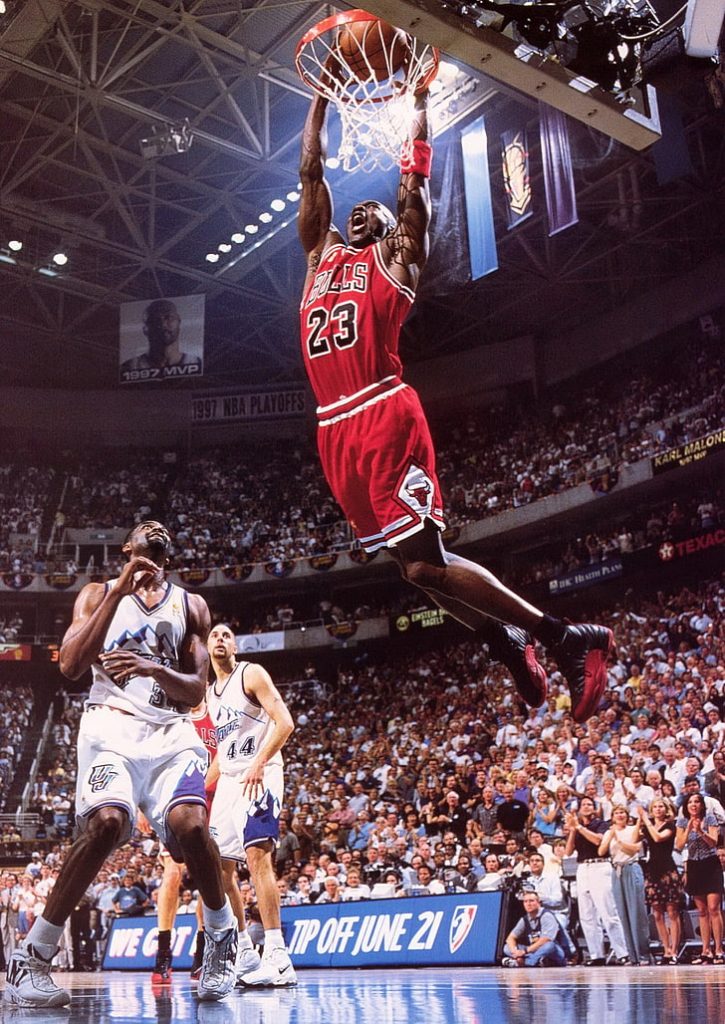
- Michael Jordan wasn’t always great. In his sophomore year, Jordan tried out for his school’s team. He has often spoken about not seeing his name on the team list and bursting into tears. Instead of dwelling on it, though, he used the fact his name was not there to push himself harder.
- In 1949, the NBL and BAA leagues merged, changing their name to the National Basketball Association. While the NBA describes it as an “expansion,” the two groups combined to create a 17-team league across several cities.
- Organized basketball first recorded a dunk in 1936, performed by a Texan named Joe Fortenberry. In the ’60s, the NBA banned dunking in games altogether, though they rescinded this rule in 1976.
- It wasn’t until 1966 that any NBA team hired a black coach. The Boston Celtics hired Bill Russell, a well-known professional player, to lead their team.
- In 1976, women’s basketball became an Olympic sport. In 1978, America started the Women’s Basketball League. That league collapsed in 1981. Starting in 1996, women play in the WNBA.
- Over approximately 16,000 games against the Harlem Globetrotters, the Washington Generals have only ever won 4 games.
- The three-point line didn’t exist before 1979. For decades, it moved back and forth in test games before ending at its current location of 23 feet, 9 inches from the basket.
- As of now, the tallest NBA player ever is Gheorghe Mureșan at 7-foot-7. He played from 1993 to 2000 and scored 3,020 points for two teams, starting with the Washington Bullets/Wizards and New Jersey Nets.
- [My addition: Yasutaka Okayama, 7’8” is the tallest player ever drafter for the NBA, but he never played in the NBA,]
- At 5’3” Tyrone “Muggsy” Bogues is the shortest NBA player. He played for four different teams during his 14- season NBA career.
- Jameson Curry signed a ten-day contract with the Los Angeles Clippers. The coach finally subbed him in as a game was about to end. He played 3.9 seconds, the record for shortest time played. The team released him from the contract shortly thereafter.
Basketball Fun
And then there are these fun facts from across the web:
- Players in the first basketball game played with a soccer ball rather than a basketball.
- During the inaugural game between the Los Angeles Sparks and the New York Liberty on June 21, 1997, basketball legend Lisa Leslie made history by scoring the first basket in the WNBA.
- The WNBA started with 8 teams and expanded to 12. The NBA has 30 teams.
- The Harlem Globetrotters, famous for their entertaining tricks and stunts, have been around since 1926.
- In basketball, players can make shots worth different numbers of points – one point for a free throw, two points for a regular field goal, and three points for a shot made beyond the three-point line.
- The highest-scoring NBA game ever took place on December 13, 1983. The Detroit Pistons defeated the Denver Nuggets by a score of 186-184! Was anyone playing defense?
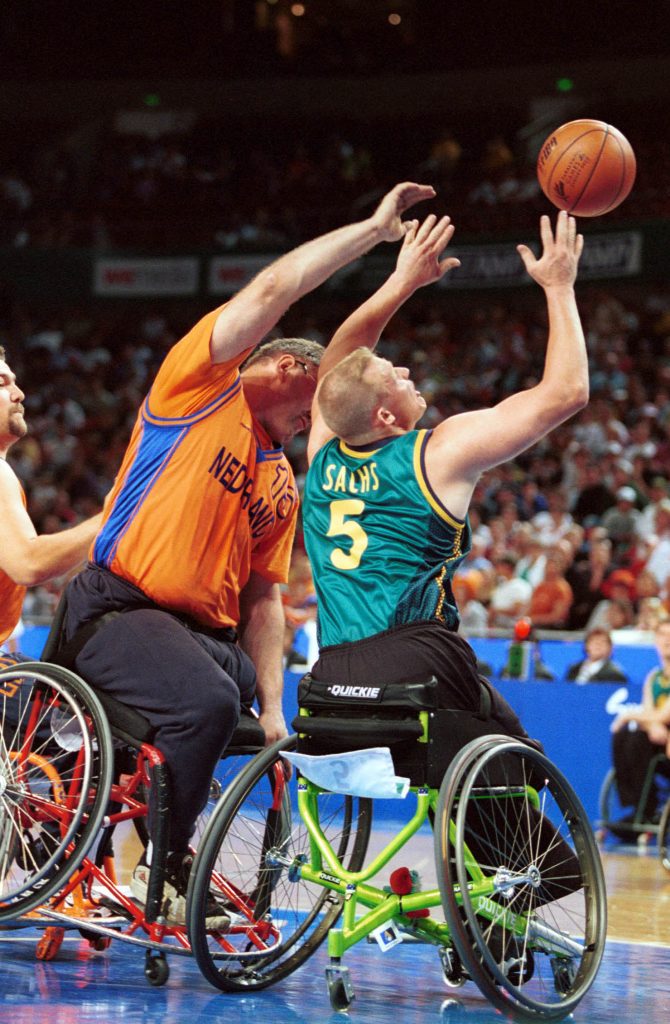
- The average NBA player runs 2-3 miles per game!
- In recent years, the WNBA has become a leading advocate for social justice, with players and teams using their platforms to champion important causes and promote meaningful change. It is a beacon of diversity, equality, and athleticism, showcasing the immense potential of women in sports.
- The 2020 Tokyo Olympics marked the 30th anniversary of basketball’s debut as an official Olympic sport.
- Wilt Chamberlain currently holds the single game point record. He scored 100 points in a single game for the Philadelphia Warriors against the New York Knicks in 1962.
- In 2015, Stephen Curry became the first of the NBA players to make 400 three-pointers in one season.
- Stephen Curry has been an NBA All-Star ten times, 2014-2024.
- Male athletes in basketball (as well as golf, soccer, baseball, and tennis) were still earning anywhere from15% to nearly 100% more than females in 2023. Well, this one isn’t such a fun fact!
Bottom Line: Basketball is more complex and interesting than most viewers realize.

(2020 Iranian women’s basketball team at the Pan-Asian games)
